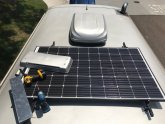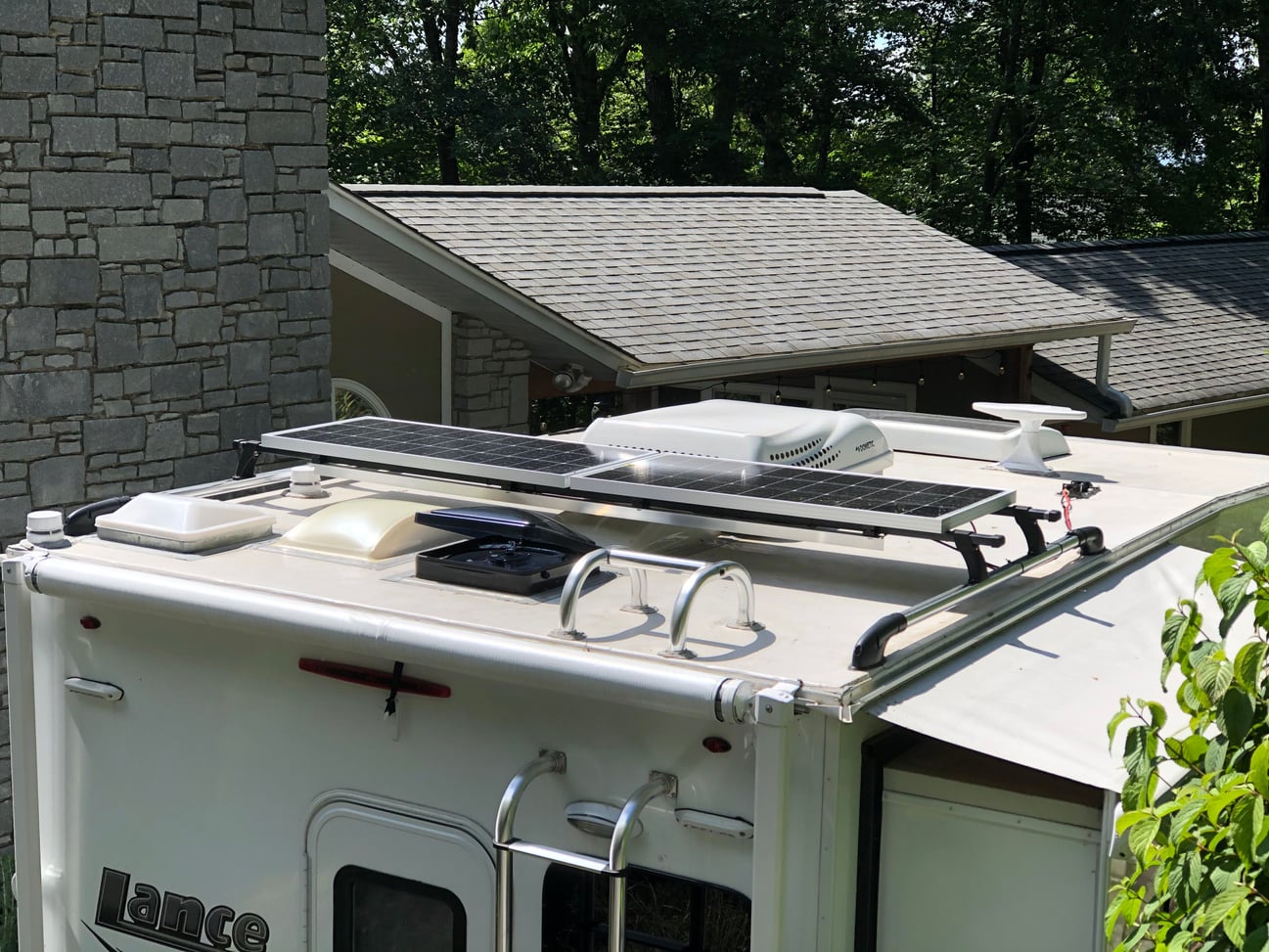I used 60 cell 3x 280W home panels on 102” wide coach. And the anodized rack system. I forget which but recall uni rack.
went to a wholesale solar supply house for everything.
I put deep wall M6 rivnuts in to bulkhead supports which in my case are thick. The the rivnut sandwiches the bulkhead hoop and the outer aluminum roof skin. I put a sealing cloth tape down over the hole before bolting the L bracket to seal. The L brackets are beefy. 3/16 aluminum with M8 hardware.
The panels mounted this way with black racks and panels almost disappear.
you can also see that I added an extra L bracket upfront And in the rear just for redundancy.
The rack systems are strong, tested, and inexpensive. Might as well use them unless you need tilt.
Hope this helps.




went to a wholesale solar supply house for everything.
I put deep wall M6 rivnuts in to bulkhead supports which in my case are thick. The the rivnut sandwiches the bulkhead hoop and the outer aluminum roof skin. I put a sealing cloth tape down over the hole before bolting the L bracket to seal. The L brackets are beefy. 3/16 aluminum with M8 hardware.
The panels mounted this way with black racks and panels almost disappear.
you can also see that I added an extra L bracket upfront And in the rear just for redundancy.
The rack systems are strong, tested, and inexpensive. Might as well use them unless you need tilt.
Hope this helps.









